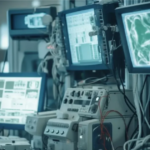The Renaissance period, spanning from the 14th to the 17th century, marked a profound cultural and artistic revival in Europe. Among its many facets, Renaissance fashion stands out as a reflection of the era’s creativity, opulence, and societal values. In this article, we delve into the captivating world of Renaissance dress, exploring its historical significance, evolution, and enduring influence on modern fashion.
Historical Context of the Renaissance Period
The Renaissance was a period of immense cultural, economic, and political transformation in Europe. Emerging from the Middle Ages, it witnessed a resurgence of interest in classical art, literature, and philosophy. This revival of learning, coupled with increased trade and prosperity, laid the groundwork for a flourishing of creativity and innovation in various spheres of life, including fashion.
Evolution of Fashion During the Renaissance
Influence of Social Status
During the Renaissance, clothing became an important marker of social status and identity. The wealthy elite adorned themselves in luxurious fabrics and extravagant designs, showcasing their wealth and power, while the lower classes wore more modest attire, often made from simpler materials.
Materials and Fabrics Used
Silk, velvet, and satin were among the favored fabrics of Renaissance fashion, prized for their richness and luster. These materials were often imported from distant lands, adding to their allure and exclusivity. Elaborate embroidery, lacework, and embellishments further enhanced the beauty of Renaissance garments, making them exquisite works of art in their own right.
Key Features of Renaissance Clothing
Renaissance clothing was characterized by its lavishness and attention to detail. Women’s dresses featured intricate bodices, voluminous skirts, and elaborate sleeves, often adorned with pearls, jewels, and gold thread. Men’s attire, meanwhile, consisted of tailored doublets, fitted hose, and elaborate headwear, such as feathered caps and berets.
Women’s Fashion in the Renaissance
Gowns and Dresses
Women’s dresses during the Renaissance were voluminous and elaborate, with fitted bodices and full skirts. Richly embroidered fabrics, such as brocade and damask, were favored for formal occasions, while simpler cotton and wool were worn for everyday dress.
Hairstyles and Headwear
Hairstyles played a significant role in Renaissance fashion, with women often adorning their hair with intricate braids, curls, and jewels. Headwear ranged from delicate veils and headdresses to elaborate tiaras and coronets, adding an extra layer of elegance to their attire.
Accessories
Accessories were essential to complete the Renaissance look. Women adorned themselves with pearl necklaces, gold chains, and gemstone earrings, while men accessorized with leather belts, sword belts, and ornate buckles.
Men’s Fashion in the Renaissance
Doublets and Hose
Men’s fashion in the Renaissance was characterized by the doublet, a close-fitting jacket worn over a shirt or chemise. Paired with fitted hose, often made from silk or velvet, the doublet accentuated the masculine form and exuded sophistication and refinement.
Codpieces
One distinctive feature of Renaissance men’s attire was the codpiece, a padded or reinforced pouch worn over the groin area. Originally designed for practical purposes, such as ease of movement on horseback. Codpieces became increasingly elaborate and ornamental, symbolizing virility and masculinity.
Hats and Caps
Headwear was an essential component of Renaissance men’s fashion. Feathered caps, velvet berets, and plumed hats were popular choices, adding a touch of flair and distinction to their ensemble.
Influence of Renaissance Dress on Modern Fashion
The influence of Renaissance dress can be seen in various aspects of modern fashion. From the use of luxurious fabrics and intricate embellishments to the revival of vintage silhouettes and styles. Designers continue to draw inspiration from the elegance and opulence of the Renaissance era. Creating timeless pieces that pay homage to this golden age of fashion.
Famous Renaissance Fashion Icons
Several historical figures are renowned for their impeccable sense of style and contribution to Renaissance fashion. Among them are Queen Elizabeth I of England, known for her elaborate gowns and elaborate hairstyles. And King Henry VIII, whose sumptuous attire and extravagant tastes set the standard for royal fashion.
Conclusion
In conclusion, Renaissance dress remains a fascinating subject of study and admiration, offering a glimpse into an era of elegance, creativity, and cultural revival. From lavish gowns to tailored doublets. The fashion of the Renaissance continues to inspire and captivate us, reminding us of the enduring allure of the past.
How did Renaissance fashion differ between social classes?
Renaissance fashion varied greatly depending on social status. The wealthy elite adorned themselves in luxurious fabrics and extravagant designs, showcasing their wealth and power. While the lower classes wore more modest attire made from simpler materials.
What were some common accessories worn during the Renaissance?
Common accessories during the Renaissance included pearl necklaces. Gold chains, gemstone earrings for women, and leather belts, sword belts, and ornate buckles for men.
Who were some influential figures in Renaissance fashion?
Queen Elizabeth I of England and King Henry VIII are renowned for their impeccable sense of style and significant contributions to Renaissance fashion.
How did Renaissance fashion influence modern clothing?
The influence of Renaissance fashion can be seen in various aspects of modern clothing, from the use of luxurious fabrics and intricate embellishments to the revival of vintage silhouettes and styles.
What role did textiles and fabrics play in Renaissance dressmaking?
Textiles like silk, velvet, and satin were prized for their richness and luster during the Renaissance. These fabrics, along with elaborate embroidery and lacework. Played a crucial role in creating the lavish and intricate garments of the era.







